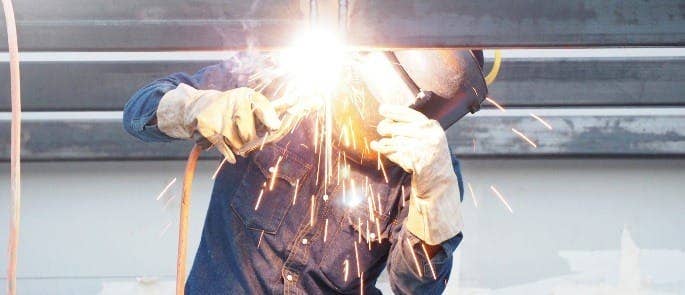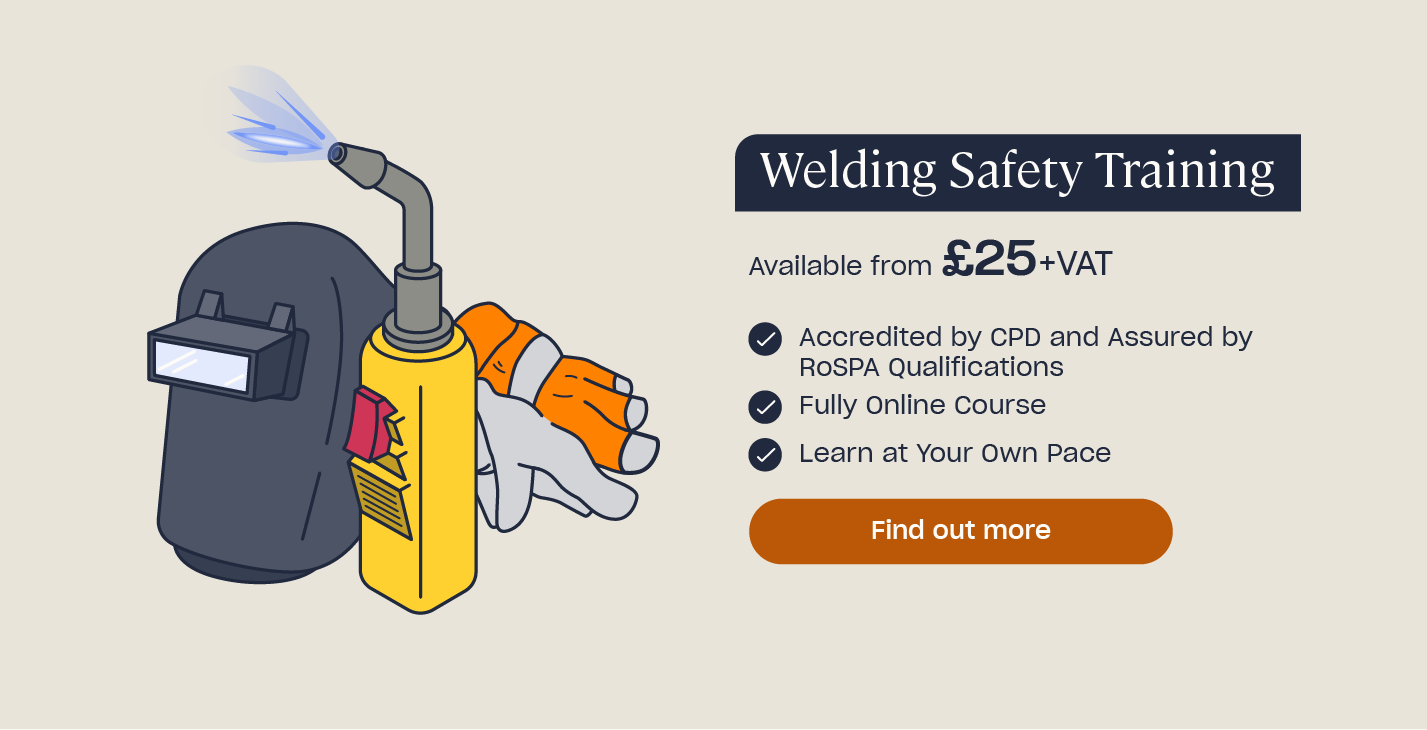Key Welding Terms Glossary
Welding is a process used to fuse two pieces of metal together and, if you work in manufacturing or engineering environments, is likely an activity you carry out regularly. Sometimes getting your head around all the technical terms can be overwhelming, so we’ve created this welding glossary to help you understand common welding terminology.
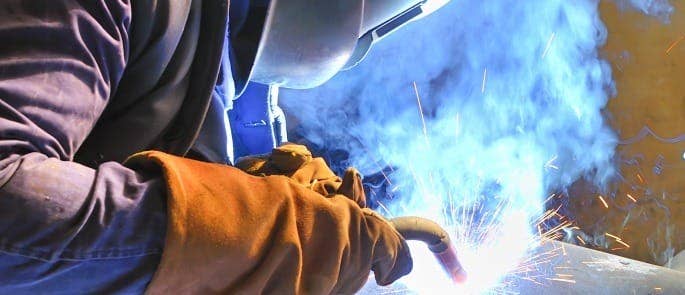
How to Use this Glossary
There are several technical terms used to describe various welding and cutting processes that you should be aware of. This welding glossary will explain common welding terms to help you understand them in greater detail.
Terms and phrases are listed alphabetically to help you find specific terms and navigate the glossary with ease. Bold italic indicates that there is a definition for a term elsewhere in the glossary in case you need further clarification.
You can refer back to this guide as often as you need.
A|B|C|D|E|F|G|H|I|J|K|L|M|N|O|P|Q|R|S|T|U|V|W|X|Y|Z
A
Arc-eye: Arc-eye (also known as ocular flash burn or welder’s flash) is an inflammation of the cornea. It occurs if a welder looks directly at the intense bloom of UV light produced during the welding process.
Arc welding: The technique by which heat created from an electrical arc is used to weld metal.
B
Base material: The base material, or base metal, is the metal or alloy being cut or welded.
C
Carcinogenic: A carcinogenic material is a substance that has the potential to cause cancer.
D
Double insulated: Double insulated appliances are electrical appliances that don’t need safety connections to electrical earth.
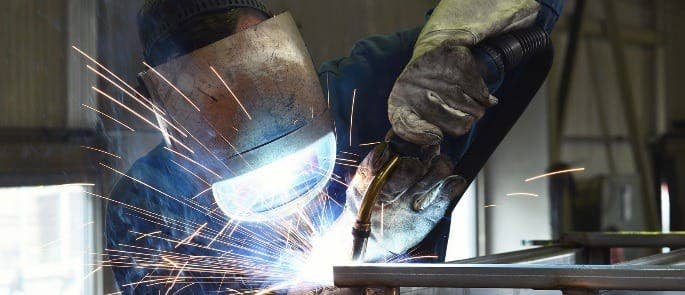
E
Earthing: Earthing is the connection of electrical devices to the ground. It protects you from electric shocks should there be a fault with your electrical device. If there is a fault in your circuit, earthing allows the fault current to flow to earth through a protective conductor while the circuit-breaker stops the electric current flowing to the faulty circuit.
Electric arc: An electric arc is the name of the electrical discharge created when two conductors touch and then are separated very slightly to allow the current to continue flowing through the air. An electric arc maintains a temperature of between 4000 °C to 6000 °C.
Electric welding: Electric welding is the name of the welding process that uses an electric arc to fuse metal. AC and DC current are both used to produce an arc in welding, and each current has their own applications and advantages. The term electric welding includes arc welding, MIG welding, TIG welding, electroslag welding and several other types of welding.
Electrode: An electrode is the collective name for the positive and negative conductors that allows electrons to leave and enter an electrical device, respectively. An electric arc is created when a base metal and an electrode come into contact and then are separated very slightly.
Electroslag welding: In electroslag welding, welding flux is used to fill the gap between the electrode and the base metal. The heat generated by the electrical arc melts the welding flux and creates molten slag. The slag conducts heat and melts the filler and base metals. Electroslag welding is commonly used to join very thick metal components.
Need a Course?
Our Welding Safety Training raises awareness of the risks presented by welding operations, including both gas and electric arc welding. It provides details of how to complete a risk assessment and follow the appropriate control measures.
F
Flashback: Flashback occurs when gas flows back into the equipment or supply line and burns within the torch or hose.
Flashback-arrestors: Flashback arrestors (also known as flash arrestors) are gas safety devices commonly used in oxy-fuel welding and cutting.
They prevent gas flowing back or burning in the torch or hose, stopping the equipment being damaged or exploding.
G
Gas cutting: A cutting process in which a gas flame is used to cut metals.
Gas welding: A welding process in which a gas flame is used to create the welding heat. Gas welding is mainly used for repair work, as well as the welding of pipes and tubes. The most common type of gas welding is oxyfuel welding.
I
Inert gas: Inert gases are extremely nonreactive gases, which will usually not react with your base or filler metals. They include argon and helium.
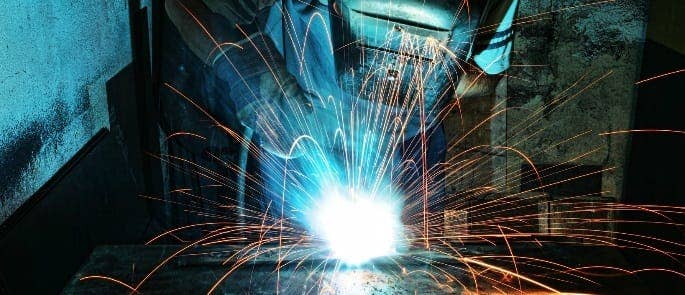
M
Metal Active Gas (MAG) welding: MAG welding is one of the arc welding processes that use the heat created by a DC electric arc to weld. The electric arc is created between the tip of the consumable wire that is constantly fed to the electrode and the weld pool on the base metal. The feed wire is continually melted and becomes part of the weld pool. A shield of active gas mixtures (usually an argon/carbon dioxide/oxygen mix) is used to protect the arc and weld pool from atmospheric contamination. The composition of the active gas mixture has a significant effect on arc stability, splatter and metal transfer, as well as affecting the weld pool behaviour and the mechanical properties of the weld.
Metal Inert Gas (MIG) welding: MIG welding is one of the arc welding processes that use the heat created by a DC electric arc to weld. The electric arc is created between the tip of the consumable wire that is constantly fed to the electrode and the weld pool on the base metal. The feed wire is continually melted and becomes part of the weld pool. A shield of inert gas (usually argon or helium) is used to protect the arc and weld pool from atmospheric contamination.
O
Oxyfuel welding: Also known as gas welding, oxyfuel welding uses a mixture of oxygen and another gas (usually acetylene, propylene, or propane) to weld and cut metal. The most common type of oxyfuel welding is oxyacetylene welding.
Oxyacetylene welding: Oxyacetylene welding is a type of oxyfuel welding, where the welding flame is created by a mixture of oxygen and acetylene gas. This flame typically burns at around 3500 °C which is hot enough to melt the surface of the base metal and allows the welding process to take place. The oxyacetylene welding process allows the user to quickly change between welding and cutting by changing the tip. This type of welding is commonly used to weld steel and bronze.
R
Regulator: A regulator is used to monitor the amount of shielding gas flowing to the welding puddle. It also ensures that it flows into the welding puddle smoothly and evenly.
S
Shielding gas: This is the name for an inert gas used to protect a welding area when electric arc welding processes are being carried out. The most common type of ‘shielding gas’ is argon.
Slag: Slag, also known as welding slag, is created as a by-product of arc welding when solidified flux remains after the weld pool cools.
T
Tungsten inert gas (TIG) welding: TIG welding is another form of electric welding. The electric arc is created between a non-consumable tungsten electrode and the base metal, and the heat generated forms a weld pool. A consumable filler wire may or may not be added to the weld pool. A shield of inert gas (usually an argon/carbon dioxide mix) is used to protect the arc and weld pool from atmospheric contamination.
W
Welder’s flash: Welder’s flash (also know as ocular flash burn or arc-eye) is an inflammation of the cornea. It occurs is a welder looks directly at the intense bloom of UV light produced during the welding process.
Welding flux: The flux is a chemical agent that has three main purposes when used in welding. It cleans the base metal and protects the weld pool from atmospheric gases, it aids the transfer of heat from the electrode to the base metal and helps remove surface metal oxides. Overall, the flux is integral to a good welding process.
Welding rods: A welding rod, also known as a welding electrode, is a piece of wire that is connected to the welding machine. A current is fed through the electrode, which allows for an electric arc to be generated between the electrode and the base metal. Welding rods can be consumable (the wire melts and forms part of the welding pool, such as in MIG welding) or non-consumable (the wire does not melt, such as in TIG welding).
Weld pool: The weld pool is the small area on the base metal which has reached its melting point.
What to Read Next:
- What is Arc-Eye? A Guide to the Dangers of Arc Welding
- Welding Safety Quiz
- Welding Hazards in the Workplace: Safety Tips & Precautions
- 15 Workshop Hazards and How to Avoid Them
- Welding Safety Training


